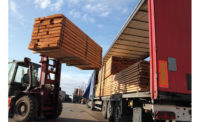
Over the past 18 months, an abundance of natural gas and record-breaking commodities prices brightened prospects for engineers and contractors involved in the business of building new fertilizer manufacturing capacity. NPK Fertilizer Advisory Service, St. Louis, recalls dozens of announcements for new plants and capacity expansion during this time, but the market has cooled a bit and industry newcomers could find margins very tight.
Still, projects under various stages of construction and development are now proceeding in Indiana, Iowa, North Dakota and Montana, after developers noticed ever-increasing acreage of commodity crops and a fertilizer supply gap in local markets. “Corn and canola are expanding with new varieties in North Dakota, Minnesota and Canada,” says Larry Macke, COO of Northern Plains Nitrogen, Grand Forks, N.D. “And a major cost of fertilizer is transporting it.”
Once the United States imported over 50% of its fertilizer, but the gap is closing, and it’s a trend plant developers hope will continue. Prices for corn and soybeans and other volatile agricultural commodities, however, have fallen considerably from the drought-fed highs of 2012. Indeed, basing projects costing $1.5 billion to $2 billion on volatile commodities markets involves serious risk. “When the price of the output drops in half it kills a lot of projects,” says David Asbridge, president of NPK. “Most of the plants that have not gotten out of the planning and permitting stages will not get built.”
Most of these projects come from start-ups or fertilizer-sector newbies hoping to capitalize on what they see as a hot market. A snapshot of major projects around the country that have already started construction, however, shows entrenched industry players whose plants “make more economic sense” and will fare better in the marketplace, Asbridge says.
Midwest Fertilizer, a Delaware company comprising several international firms, has issued nearly $2 billion in bonds and selected a site in Posey County, Ind., to build a major plant. CF Industries, Deerfield, Ill., is wrapping up engineering and procurement activities for nearly the $2 billion in projects it expects to begin in 2014 at facilities in Port Neal, Iowa, and Donaldsonville, La. Minnesota’s CHS Inc., the nation’s largest agricultural cooperative, has a plant under construction in Shelby, Mont., and another under development near Spiritwood, N.D. Black and Veatch signed on as the general contractor for a Koch Fertilizer plant’s expansion in Enid, Okla.
”All of these projects are being driven by the surge in natural gas. It’s low-cost and the simplest feedstock to re-form into ammonia,” says Garry Hart, VP of business development for Black and Veatch. “The energy needed to reform coal coke or petroleum feedstocks is greater.”
While the feedstock might be cheap, capital expenditures are not. A new greenfield fertilizer plant costs as much as $1.7 billion, in part because of the scarcity of relative construction expertise in the world market. “Fertilizer plants are more complex than other industrial facilities like power plants,” Hart says. “They involve high pressures—near 2200 PSI—proprietary designs and quite complex instrumentation, exotic metallurgy, heavy wall reactors.”



Post a comment to this article
Report Abusive Comment